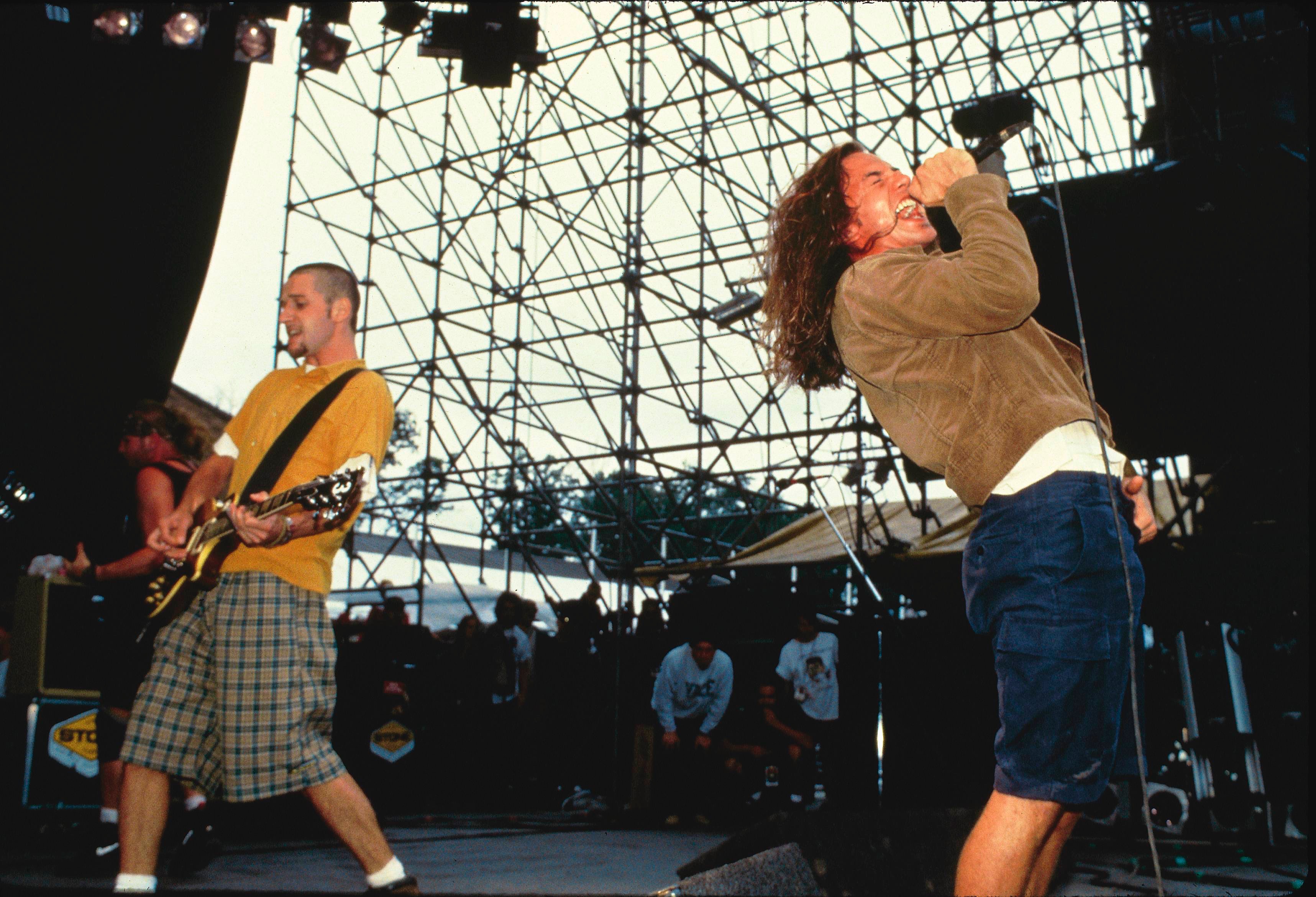
The dominant new musical trend of the early 1990s was also one of the most improbable. Emerging from the noisy, DIY rock scene of the perpetually overshadowed Seattle, grunge became the voice of a disaffected generation who’d grown tired of slick pop and pompous, primping frontmen stuffed into spandex outfits.
The raw, unadorned sound and angsty, highly personal lyrics of acts such as Soundgarden, Nirvana and Pearl Jam quickly overtook the entire world, with the late Kurt Cobain and company’s 1991 major-label debut Nevermind and its single “Smells Like Teen Spirit” kicking down the door of stale corporate rock once and for all. Pearl Jam’s 1991 debut album Ten became a multi-platinum smash that’s still a staple of rock radio more than 30 years later, while Soundgarden’s 1994 album Superunknown demonstrated their rightful place amongst the most influential bands of their time.
More from Spin:
- ‘Decades Of Sound’: The Beat Rolls On In The 2000s
- Bose X SPIN Team Again For ‘Decades Of Sound’
- ‘Decades Of Sound’: Punk, Disco, Reggae Rock The 1970s
The surprising mainstream success of grunge was a boon for the wider world of alternative and independent rock, with countless offshoots branching out from Chapel Hill, N.C., Louisville, Ky., Chicago and Washington, D.C. R.E.M.’s Automatic for the People (1992), Red Hot Chili Peppers’ Blood Sugar Sex Magik (1991) and Smashing Pumpkins’ Mellon Collie and the Infinite Sadness (1995) generated headlines, but more under-the-radar colleagues such as Pavement, Liz Phair, Sonic Youth, Pixies and Beck turned heads and opened minds of younger listeners.
This forward momentum also gave rise to Lollapalooza, the first American touring festival of its kind, and, at the very tail end of the decade, the maiden edition of Coachella in Palm Springs, which became the gold standard of festivals by the early 2000s.
In the U.K., the Britpop revolution made superstars out of Oasis, Pulp, the Verve and Blur, whose charismatic frontmen sang anthems that felt larger than life, while Radiohead’s dystopian OK Computer (1997) proved that daring, left-of-center music could still be commercially successful.
Hip-hop was even more popular in the ‘90s then in the ‘80s, although an increasingly violent coastal rivalry between New York and L.A. factions resulted in the murders of two stars in the prime of their careers, Tupac Shakur and the Notorious B.I.G. Dr. Dre and Snoop Dogg became larger-than-life personalities amid this upheaval, while up-and-comers such as Wu-Tang Clan and OutKast stirred sci-fi, kung-fu, soul and street smarts into a groundbreaking new urban sound.
Electronic music gained significant traction in the 1990s with the rise of rave culture and the mainstream success of electronic dance music (EDM). Artists such as the Prodigy, Fatboy Slim, the Chemical Brothers, Underworld, Daft Punk and Moby became household names, with the Prodigy’s The Fat of the Land (1997) and Moby’s Play (1999) in particular becoming crossover smashes.
Even more traditional genres such as R&B continued to evolve in the 1990s, with artists such as Mariah Carey, Whitney Houston and Boyz II Men dominating the charts. A parallel movement came to be known as neo-soul, with Erykah Badu’s Baduizm (1997) and Lauryn Hill’s The Miseducation of Lauryn Hill both becoming cultural touchstones for their blend of classic soul and modern R&B.
After taking a back set to other genres for much of the decade, pop music roared back to life by the end of the decade, driven by a new generation of young stars who achieved massive commercial success. Britney Spears, with her debut single “…Baby One More Time” (1998), and Christina Aguilera, with “Genie in a Bottle” (1999), became teen pop sensations, while boy bands such as *NSYNC (with a nascent Justin Timberlake in tow) and Backstreet Boys made fans swoon thanks to their good looks, earworm melodies and charming personalities.
To see our running list of the top 100 greatest rock stars of all time, click here.